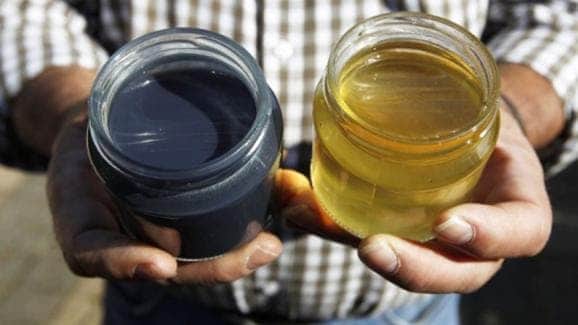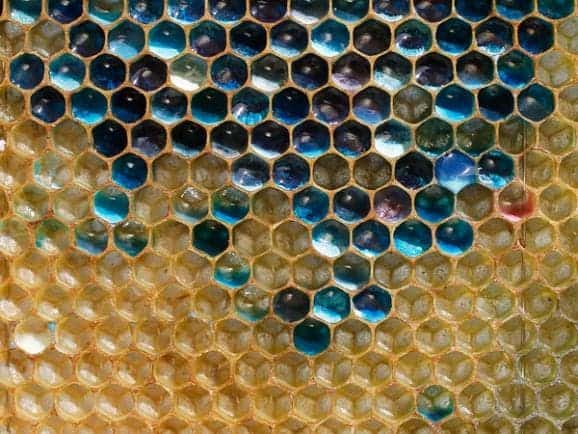It’s a tough time to be a bee. The bee population is undergoing a massive wipe-out caused by pesticides, fungicides, and habitat destruction, and despite some bans and measures to protect bees, the world is still not taking steps to save the little insects. All around the world, bee numbers are dropping and will continue to drop massively until we actually do something to protect them. To add insult to injury, bees also have to deal with factories and other buildings opening up in their habitats. But as the saying goes, when life gives you factories, make factory honey.
French beekeepers were stunned to see their bees produce honey in different colors than natural. Honey color can be influenced by what the bees use to produce it and colors can range from very light yellow to dark amber — but this time, the honey was unlike anything the beekeepers had ever seen: it was blue.
The keepers around the town of Ribeauville in the region of Alsace suspected something was up. They witnessed bees returning to their hives carrying unidentified colorful substances, which they used to create honey of extremely unusual colors. Baffled by this behavior and result, they investigated the cause, trying to figure out what the insects were eating.
Their search took them to a biogas plant some 4 km (2.5 miles) away — a processing waste from a Mars plant producing M&M’s, the famous bite-sized candies that come in bright red, blue, green, yellow, and brown shells. The honey, of course, is unsellable — not only is it of unknown componence, but it’s extremely unhealthy (what that means for M&Ms, you can decide for yourself). Even though it may taste like normal honey, it’s nothing like it.
“For me, it’s not honey. It’s not sellable.”- that’s the general idea of beekepers in the region.
The batch of polluted honey makes even more problems for beekeepers, creating a financial hole that was very difficult to fill up.
When contacted, Mars, who owns the factory, didn’t respond and didn’t make any comment on the situation. Still, Agrivalor, the company operating the biogas plant, said that they weren’t aware of this problem, and they only found out about it when the beekeepers did, which is, let’s say, understandable. They claim to be now running an operation designed to stop this problem. However, other publishers claim that the company was not properly sealing/containing the waste, allowing the bees to feast on it.
France is one of the largest producers of honey in the European Union, producing some 18,330 tonnes annually. As for this area, Ribeauville is best known for its wine production, but it also produces about 1,000 tonnes of honey per year. It’s still unclear how much of the honey production was affected by M&Ms.











